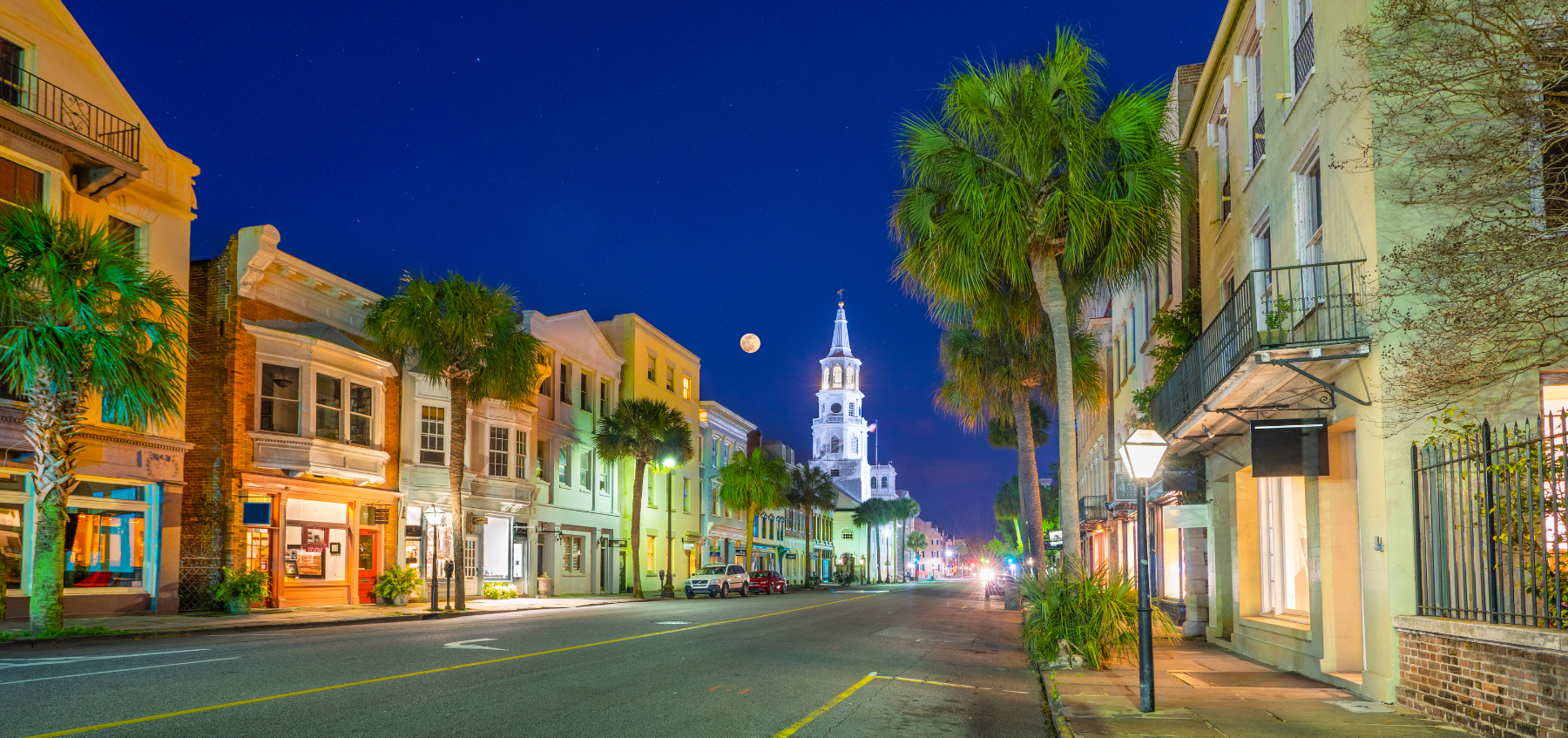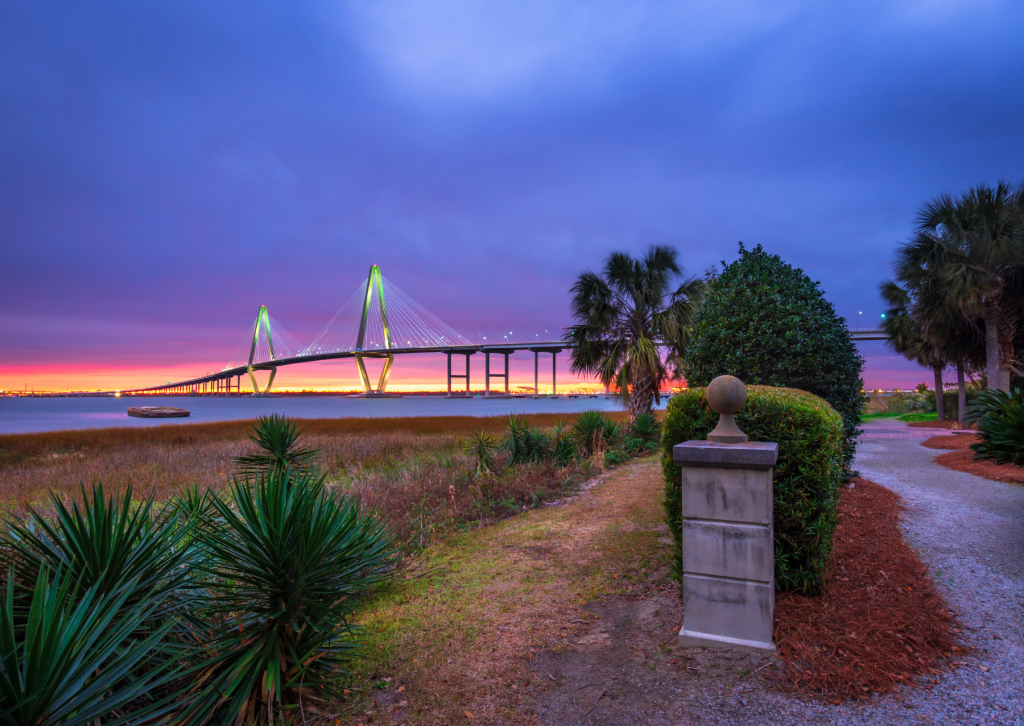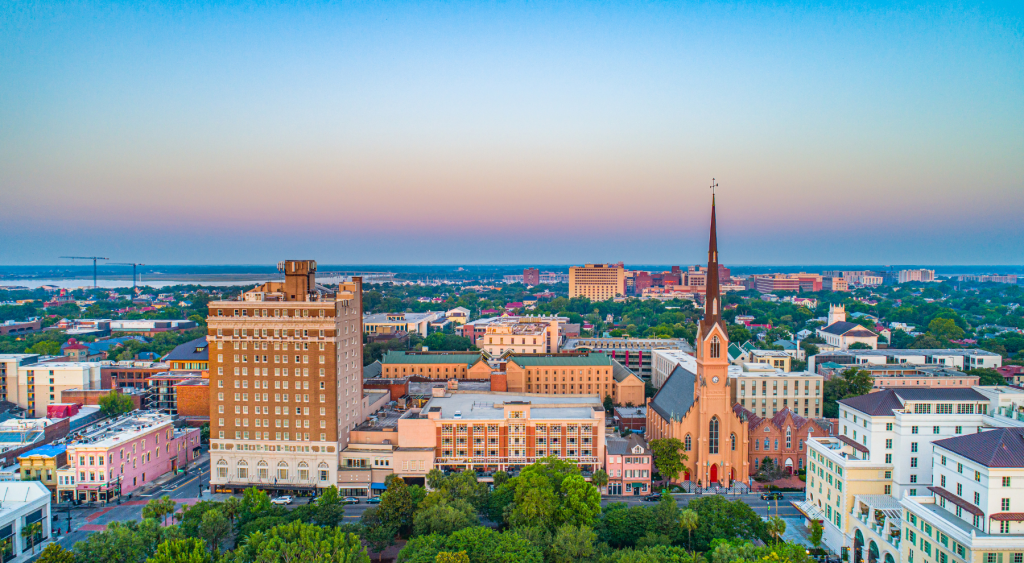
Discover Historic Charleston: A Trip Back in Time
Published on February 23, 2024
eATLAS has two free Adventures in Charleston, S.C. Check out our Washington Square and Sea Line Area guided tours that explore the parks, vistas, and historical sites in the heart of the city and along the waterfront.
By Dave Lifton (@daveeatschicago)
In 1663, King Charles II granted the newly chartered colony of Carolina to the Lords Proprietors, eight noblemen who helped restore him to the throne after Oliver Cromwell’s revolt. Seven years later, 150 English colonists, plus their indentured servants and slaves, chose an inlet formed by the confluence of the Ashley and Cooper Rivers, and landed on the west bank of the Ashley, at a spot they called Albemarle Point. In honor of their monarch, the place was named Charles Town.
Within a decade, however, a decision was made to relocate to the peninsula across the river, and it was quickly established as the capital of the province of Carolina. In order to protect Charles Town from the Spanish and French, and Native American tribes—all of whom contested Britain’s claim to the land—as well as pirates, a wall was built around the 62 acres that had been settled. It was completed in 1711, a year before Carolina was split into two colonies, and dismantled by 1730, around the time the Proprietors sent back to Britain. By this time, the city’s name had been condensed to one word.
The wharves on East Bay St. soon turned Charlestown into the most vital port in the South, with pelts, indigo, and rice being the chief exports. But there is no getting around the fact that Charles Town was the colonial city that profited most from the slave trade. Through its role in the importation, buying, and selling of humans, Charlestown was, by the middle of the 18th century, the largest and wealthiest city south of Philadelphia. It’s estimated that 40 percent of the enslaved Africans brought to America came through the city and, as a result, South Carolina had a Black majority until the Great Migration.

Although the websites for Charleston and its tourism board overlook this part of its history, those wishing to learn more can visit the Old Slave Mart Museum on Chalmers St.
During the American Revolution, British forces tried several times to capture Charlestown. The Continental Army fought back a Royal Navy bombardment in the Battle of Sullivan’s Island on June 28th, 1776, but a second, more sustained attempt in 1780 proved successful, and was one of the worst losses for the Americans. The Brits controlled it for more than a year after the end of the war. After their departure in 1783, the city was officially incorporated as Charleston.
Although Charleston was South Carolina’s largest city, the new state chose a central location as its capital and named it Columbia. Charleston continued to prosper, especially after the 1793 invention of the cotton gin, which helped turn cotton into a major cash crop in the South. But the growth of the cotton industry also increased demand for slave labor. In 1822, a free Black man named Denmark Vesey plotted a revolt that would kill Charleston’s enslavers and liberate the majority Black population. However, it was uncovered before it could be enacted, and Vesey was captured, tried, and hanged.
The question of slavery remained a major issue in Charleston. A month after Abraham Lincoln’s election, South Carolina voted to secede from the Union due to what its legislators called “an increasing hostility on the part of the non-slaveholding states to the institution of slavery.” Charleston became the first battleground in the Civil War, with Citadel cadets firing upon the USS Star of the West as it entered Charleston Harbor to bring supplies to Fort Sumter in January 1861. Three months later, the fort was attacked by the Confederate army, with Maj. Robert Anderson surrendering after 34 hours.

The Union attempted to take Charleston several times in the early years of the war, by land and sea, only to be rebuffed by the Confederates. But a sustained attack beginning in late 1863 eventually wore down the Charlestonians, and the Union took control in February 1865, less than two months before the end of the war. The first two Union regiments to enter the city were all-Black.
In addition to having lived through two wars, Charleston has also been devastated by an earthquake in 1886 and numerous hurricanes, most famously Hugo in 1989. Fortunately, the city has long taken action towards preservation. The Charleston Museum, America’s first, was founded in 1773, and has permanent exhibits devoted to the region’s natural and cultural history. The Preservation Society of Charleston was founded in 1920 and, 11 years later, successfully lobbied for the nation’s first zoning laws enacted to protect a sizeable portion of downtown from modernity. The creation of the historic district ensures that visitors will be able to enjoy its quaint streets and charming architecture for generations to come.

The Adventure starts when you say it does.
All eATLAS Adventures are designed and built by experienced eATLAS Whoa!Guides. They're always on. Always entertaining. And always ready to go.
Check out our Adventures!